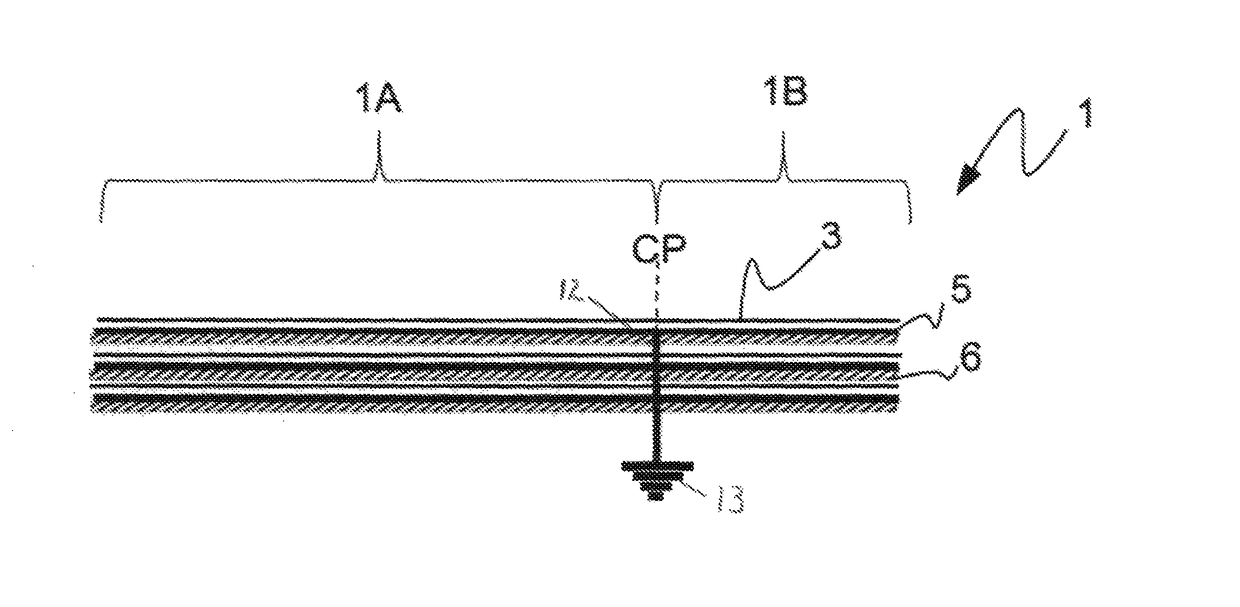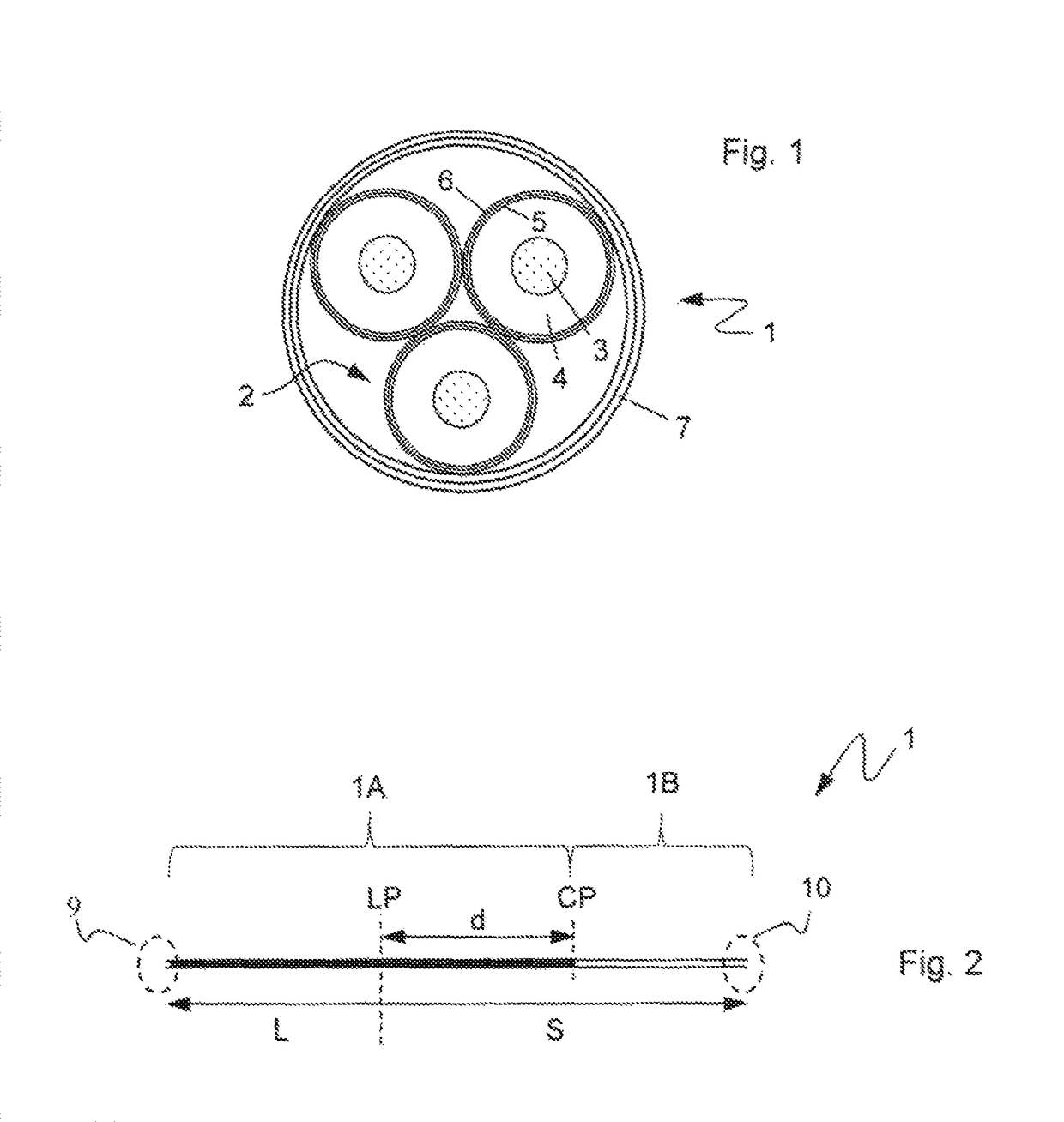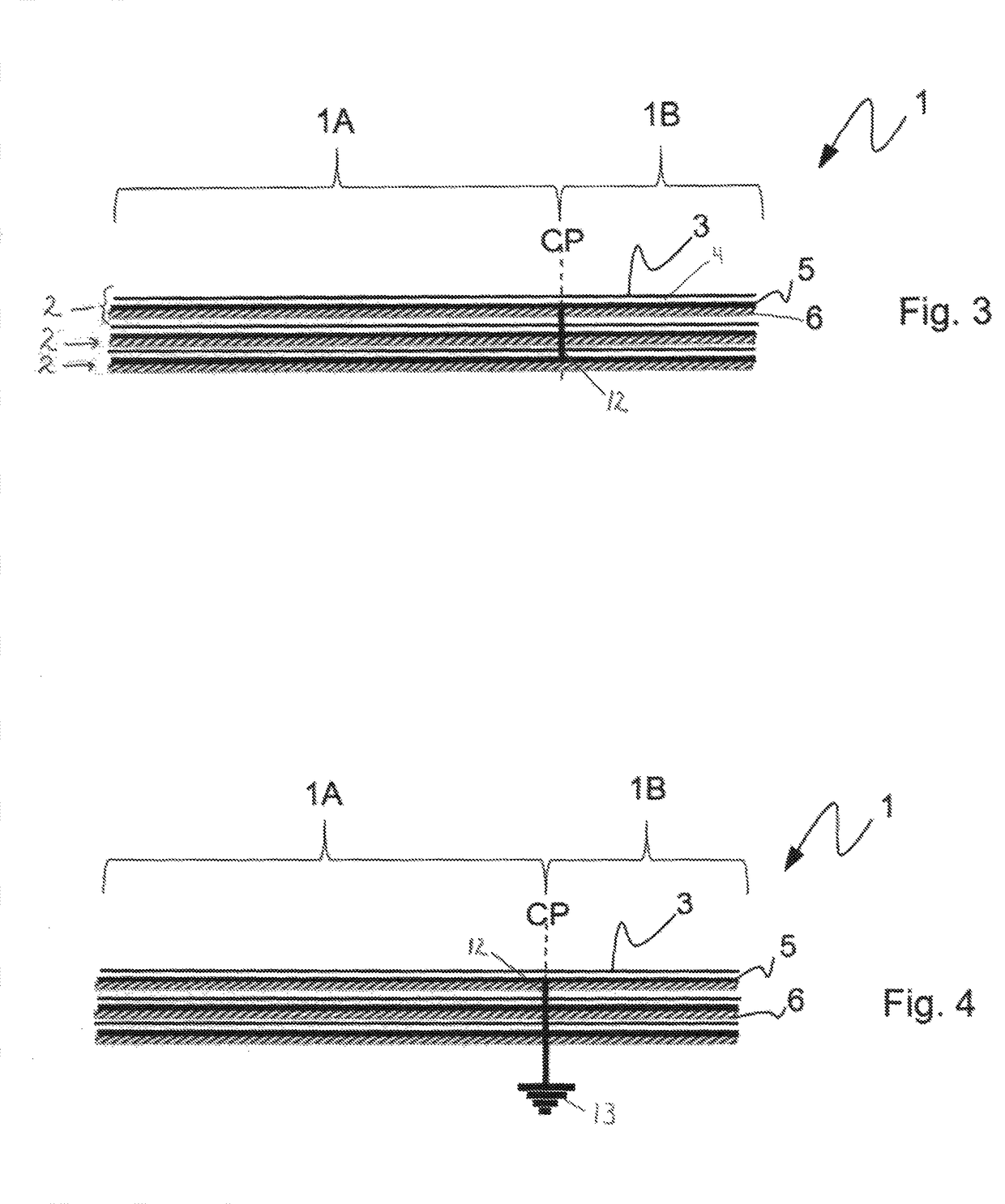Submarine low loss cable system and method for arranging a submarine cable landfall system
a low-loss, submarine-type technology, applied in the field of submarine-type low-loss cable systems and methods for arranging submarine-type cable landfall systems, can solve the problems of increasing cable system temperature, increasing the cross-sectional area of the conductor, and increasing the temperature of the cable system, so as to reduce the cross-sectional area of the submarine cable, increase the conductor cross-sectional area, and facilitate the effect of pulling in
- Summary
- Abstract
- Description
- Claims
- Application Information
AI Technical Summary
Benefits of technology
Problems solved by technology
Method used
Image
Examples
Embodiment Construction
[0049]The inventive concept will now be described more fully hereinafter with reference to the accompanying drawings.
[0050]FIG. 1 schematically illustrates an example of a cross section a cable 1, where the cable is shown with three cable cores 2. However, this invention is not limited to a three-core cable, and the cable may comprise two or any higher number of cores, as is deemed suitable for the cables necessary purposes.
[0051]Each core 2 comprises an electrical conductor 3 arranged in the centre of the core 2, the electrical conductor 3 has a cross sectional area, which affects the ampacity of the cable. As will be explained in further detail, the cable may have different sized cross sectional areas along the first and second sections. The conductor 3 may comprise copper or aluminium, or alloys of these as will be known to the person skilled in the art.
[0052]Arranged radially outside each conductor 3 is a first, electrically insulating layer 4. The electrically insulating layer ...
PUM
| Property | Measurement | Unit |
|---|---|---|
| distance | aaaaa | aaaaa |
| distance | aaaaa | aaaaa |
| distance | aaaaa | aaaaa |
Abstract
Description
Claims
Application Information
 Login to View More
Login to View More - R&D
- Intellectual Property
- Life Sciences
- Materials
- Tech Scout
- Unparalleled Data Quality
- Higher Quality Content
- 60% Fewer Hallucinations
Browse by: Latest US Patents, China's latest patents, Technical Efficacy Thesaurus, Application Domain, Technology Topic, Popular Technical Reports.
© 2025 PatSnap. All rights reserved.Legal|Privacy policy|Modern Slavery Act Transparency Statement|Sitemap|About US| Contact US: help@patsnap.com



